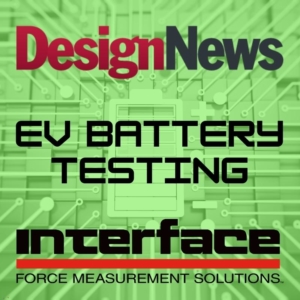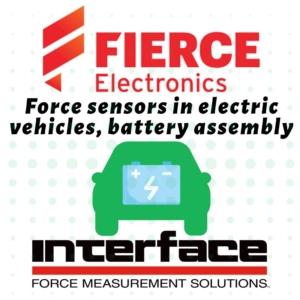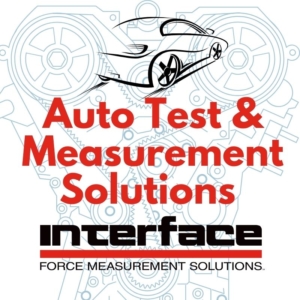Building a Clean Energy Future in Hydrogen with Force
 Clean energy is a driving force of innovation, technology, and investment in the global economy. Established energy giants and nimble startups are pouring resources into sustainable solutions. Among them, hydrogen shines as a particularly exciting frontier. The global hydrogen generation market is estimated to be $170B and growing, with an estimated 2,000 hydrogen production-related projects globally.
Clean energy is a driving force of innovation, technology, and investment in the global economy. Established energy giants and nimble startups are pouring resources into sustainable solutions. Among them, hydrogen shines as a particularly exciting frontier. The global hydrogen generation market is estimated to be $170B and growing, with an estimated 2,000 hydrogen production-related projects globally.
As with any evolving technology, monitoring and testing are necessary to qualify and improve the various systems that validate inventions and advance adoption. Interface has worked with clean energy suppliers and equipment manufacturers for many years. We have gained much experience in understanding the complexities and requirements of testing and monitoring alternative energy sources.
Among the various clean energy harvesting and storage solutions available today, hydrogen is among the most researched and impactful clean energy options. Hydrogen is considered a clean fuel that produces only water when consumed in a fuel cell. Hydrogen can be produced from biomass, natural gas, nuclear power, and renewables, including solar and wind. Read: Load Cells for Renewable Energy Production and Testing
Due to experience as a supplier of force measurement solutions for energy providers and equipment makers, Brian Peters contributed a new article about the dynamics of applying force testing in hydrogen energy to the Winter Edition of Global Hydrogen Review. His article highlights the current state of hydrogen energy and the barriers that force measurement is helping to solve. He details force-testing solutions for novel technologies that transport, monitor, and store hydrogen energy.
The full article can be read on page 19 of the December 2023 edition of Global Hydrogen Review here. We’ve also included a brief preview of the article below.
Feel The Force
By Brian Peters, VP of Global Sales, Interface
Hydrogen, as a clean and reliable renewable energy source, has been a carrot on a stick for green energy innovators for many years. Scientists and technologists have understood the positive impact of hydrogen for a long time and even harnessed it at times, but the ability to reliably transport, store, and harness this energy at a reasonable cost has previously eluded them. However, hydrogen is back in full force as storage and battery technology has advanced, giving new life to the promise of hydrogen.
Hydrogen is critical to the future of green energy because it is an optimal solution to storing renewable energy from other sources such as wind and water. In certain areas, like California, we produce too much energy from renewable sources but have nowhere to store it. This is leading to a tremendous amount of resource loss. Therefore, hydrogen innovation investment is on the rise again to solve production, storage, and monitoring application challenges aimed at curtailing waste and holding enough energy to power more infrastructure with green energy.
To start, hydrogen production in its current state is quite expensive as the element is difficult to handle, and the equipment and processes available today are scarce or subpar. Many of the traditional production and storage methods also lead to excessive waste.
One of the key reasons that storage has become such a challenge is due to the unique nature of hydrogen energy. Hydrogen is an incredibly light element in liquid form, which is a popular way of storing it in higher volumes. However, in this form, it can be very volatile and hard to maintain due to temperature constraints, and therefore, storage, metering, and more require extreme precision. While in a compressed form, hydrogen takes up more space and needs to be carefully monitored for pressure-related concerns.
Due to the volatility of hydrogen energy, transportation has also become a barrier to the reliable transfer and use of hydrogen energy. The cost alone of transporting liquid or compressed hydrogen can become immense with the current lack of stable transportation/storage methods and the danger it can pose to the individuals shipping the substance.
The road to reaching a place where hydrogen could become a real solution to meeting the demand for renewable energy has been filled with hundreds of technological advancements. One of the lesser-known but extremely critical solutions to making hydrogen a reality on a large scale is force measurement. Force sensors can be used at every level of hydrogen advancement, from harnessing the power of hydrogen to storing, monitoring, and transporting it – and more use cases for hydrogen applications are being implemented frequently. Read More
ADDITIONAL RESOURCES
Load Cells for Renewable Energy Production and Testing
Interface Details Hydrogen Electrolyzers Solution in Design News
Interface and Green Energy Innovation
Interface Load Cells Propel New Torsional Force Measurements for Wind Energy Project
Interface Supports Renewable Energy Innovation
Interface Solutions for Growing Green Energy
 As a leader in force measurement, Interface is privy to the evolving landscape of test and measurement. These top 10 trends also shape our future. Interface constantly invests in new sensor designs, technology, and tools to support our market-defining, high accuracy, quality products.
As a leader in force measurement, Interface is privy to the evolving landscape of test and measurement. These top 10 trends also shape our future. Interface constantly invests in new sensor designs, technology, and tools to support our market-defining, high accuracy, quality products.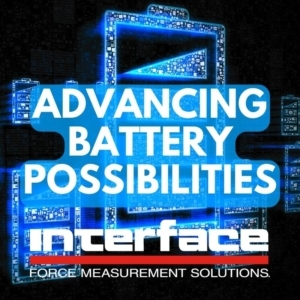 Advancements in batteries have opened new possibilities for the types of cars we drive, products we use in our homes, and even the way we store energy. Force measurement solutions play a crucial role in supporting advancements and innovation in battery technologies, as noted in
Advancements in batteries have opened new possibilities for the types of cars we drive, products we use in our homes, and even the way we store energy. Force measurement solutions play a crucial role in supporting advancements and innovation in battery technologies, as noted in 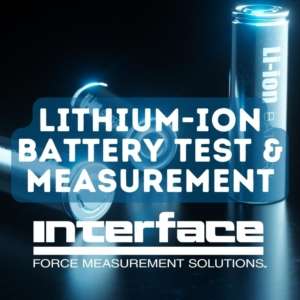 One of the key driving forces behind electric vehicle innovation is advancements in lithium-ion (Li-ion) battery technology. Exploring more efficient and powerful lithium-ion batteries increases electric vehicle adoptions and propels robust Li-ion battery developments into other industries that include industrial automation, robotics, consumer products, machinery and renewable energy.
One of the key driving forces behind electric vehicle innovation is advancements in lithium-ion (Li-ion) battery technology. Exploring more efficient and powerful lithium-ion batteries increases electric vehicle adoptions and propels robust Li-ion battery developments into other industries that include industrial automation, robotics, consumer products, machinery and renewable energy.